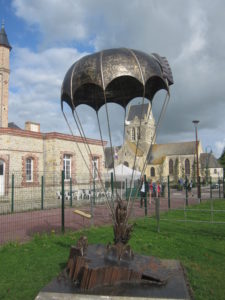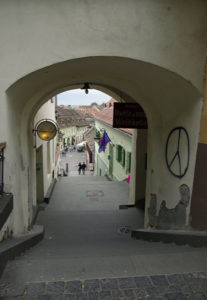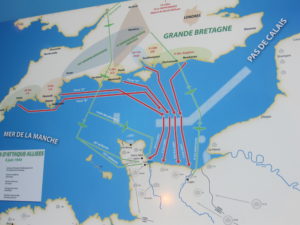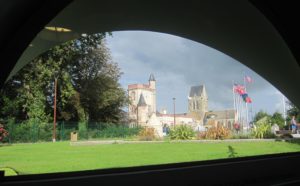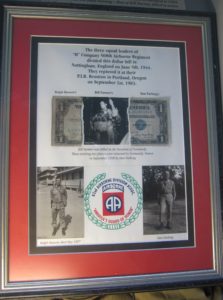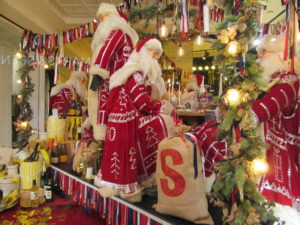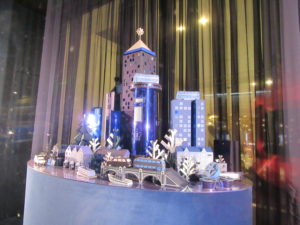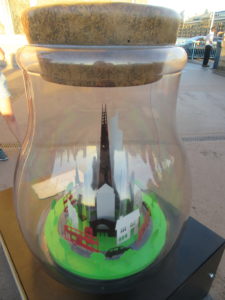Although Sainte-Mere-Eglise, was the first Normandy town to be liberated on D-Day 6th June 1944, it has been made more famous by the paratrooper, John Steele.
It is a small quiet town with interesting shops, a church and an Airborne Museum.
The Airborne Museum is managed by volunteers and is dedicated to the memory of the 82nd and 101st American Paratroopers. It opened in 1964, helped by donations from residents and veterans.
Here, you are taken to the heart of the history of Sainte-Mère-Eglise through three complementary buildings.
You can also discover moving stories and personal memories as well as many pieces on display. Inside one of he buildings you will find a parachute with an authentic WACO glider and you have the opportunity of gaining access inside next to the soldiers ready for their flight.
To commemorate the 70th anniversary of D-Day, a third building named Operation Neptune was opened, in the presence of veterans of World war II. Operation Neptune covers a large area where you will find information rooms and immersive rooms allowing you to live the D-Day experience.
Among the many items you can also view John Steele’s decorations.
Private John M. Steele was one of the American 82nd Airborne paratroopers who landed on the Church of St Mary’s tower. The town was the target of an aerial attack and a stray incendiary bomb set fire to a house near the town square (where the museum now stands). Although it is thought most likely that the fire was the result of one or more flares dropped by the Pathfinder squadron.
The church bell was rung and townsfolk turned out, forming a bucket brigade, supervised by men from the German garrison, to put out the fire. At one o’clock, when the square was well lit by the fire, 2 plane loads of paratroopers from the 1st and 2nd battalions began landing in and around the town. The paratroopers were easy targets for the Germans.
John Steele’s parachute got caught up on one of the pinnacles of the church tower and he hung there, pretending to be dead while his fellow paratroopers were shot. He hung there for 2 hours before being taken prisoner by the Germans. He later escaped and rejoined his division when the 3rd battalion US troops of the 505th Parachute Infantry Regiment attacked the village, capturing 30 Germans and killing eleven others. Steele was awarded the Bronze Star for valour and the Purple Heart.
Bullet holes can still be seen in the church’s stone walls and inside the church there are two stained glass windows, one shows the Virgin Mary surrounded by paratroopers falling in the foreground; the other shows St. Michael (patron saint of the paratroopers), dedicated in 1972.
In May 2015, work began on a fourth building in the Museum – the centre of a Franco-American Ronald Reagan Conference Centre. Opening in 2016, it will hold temporary exhibitions, seminars and lectures as well as a large cinema auditorium.
Cards, books, souvenirs and other mementos are on sale in the museum shop.
A guide isn’t necessary when visiting as there are plenty of explanations inside the museum in both French and English.
The cost of entry is 8 euros and you really need quite a while to look at everything properly. Car parking is central to the town if you want to explore further.
Having visited, I would like to now re watch the film, The Longest Day.
